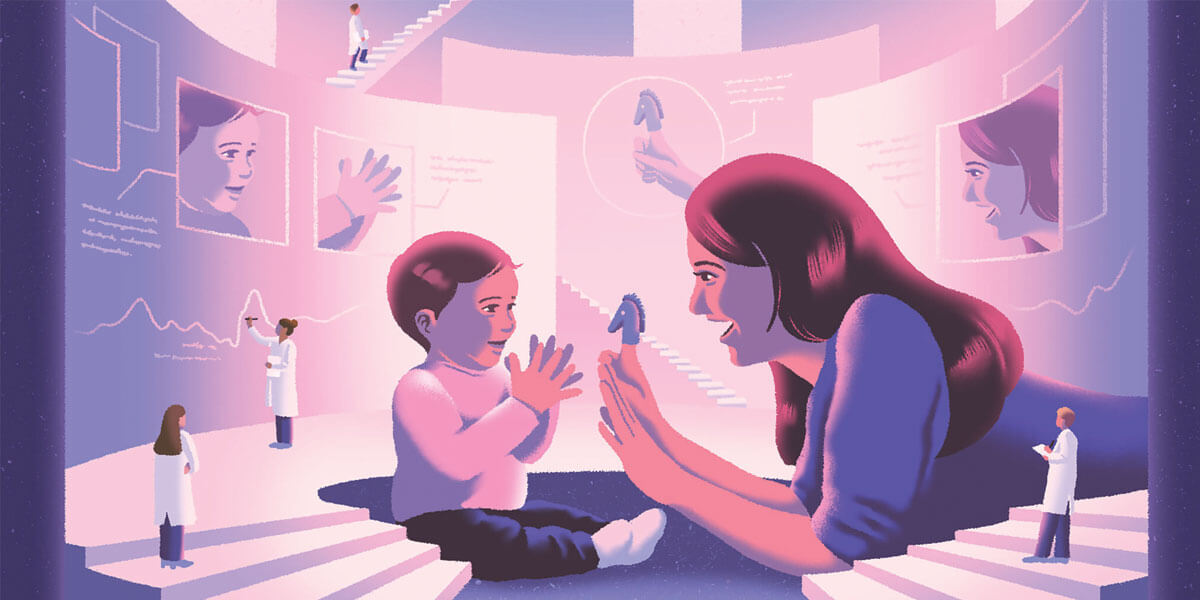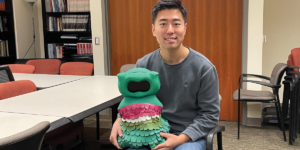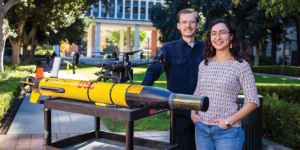
Since 2019, Lauren Klein has been researching computer science and child development at the USC Interaction Lab. She is developing an automated system to model and support infant-caregiver interactions by detecting signs of toxic stress. (Illustration/Mikyung Lee)
A parent and toddler are playing together in a small room. Colorful blocks and plush toys lie scattered on the table between them. Mom smiles and coos; baby gurgles, claps and shakes her hands. But then mom turns her face away; she stops smiling and stops talking. She sits, expressionless and motionless, for two minutes.
“During this period, the baby is completely confused,” says Lauren Klein, a doctoral student in computer science at USC Viterbi School of Engineering. “The baby tries to do everything she can to get a response from her mom — through noises and gestures — and eventually gets frustrated. Finally, the pair start playing again, during a stage called the reunion.”
Klein is describing the “Still Face Experiment,” developed by American developmental psychologist Edward Tronick in 1975, which demonstrates how babies who are just learning about their relational world try to achieve connection.
More than 45 years later, this powerful test still provides insight into how a parent’s reactions can affect a baby’s emotional development. It’s one of the reasons that toxic stress — the body’s response to lasting and serious stress — can cause disruptions in the developing brain and body that can affect a child’s physical and mental health for a lifetime.
Read the full story in the Trojan Family Magazine >>
Published on September 21st, 2022
Last updated on September 27th, 2022












